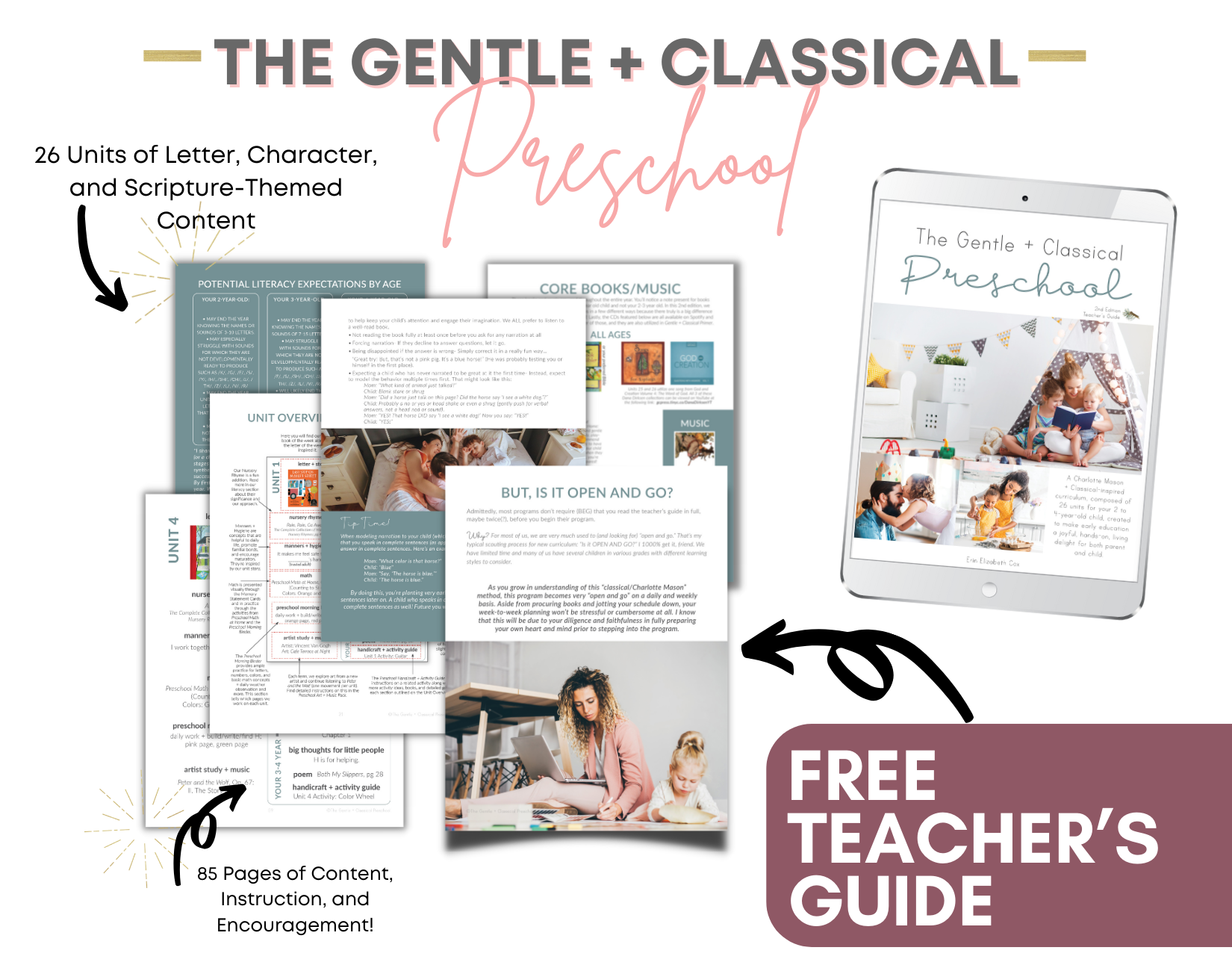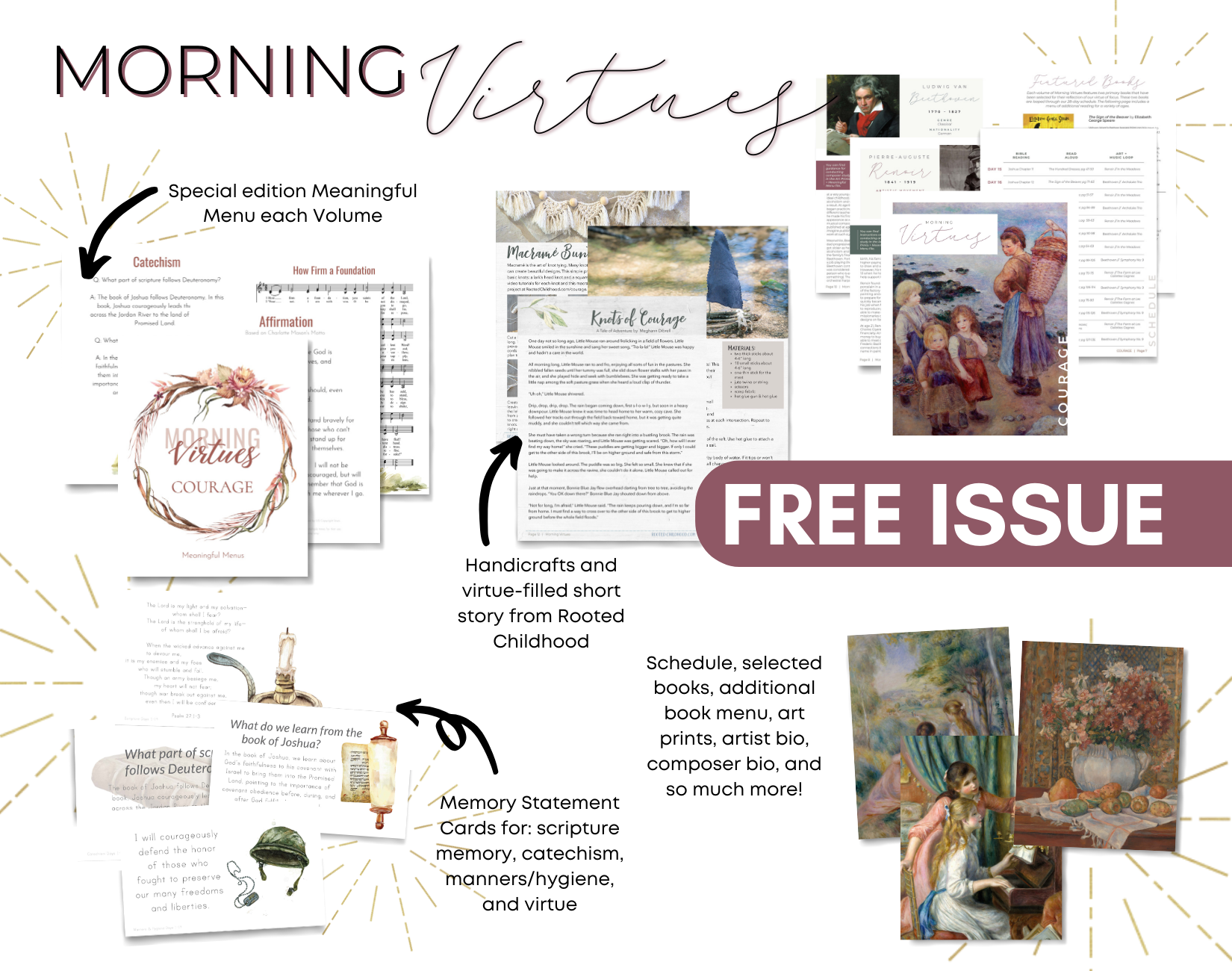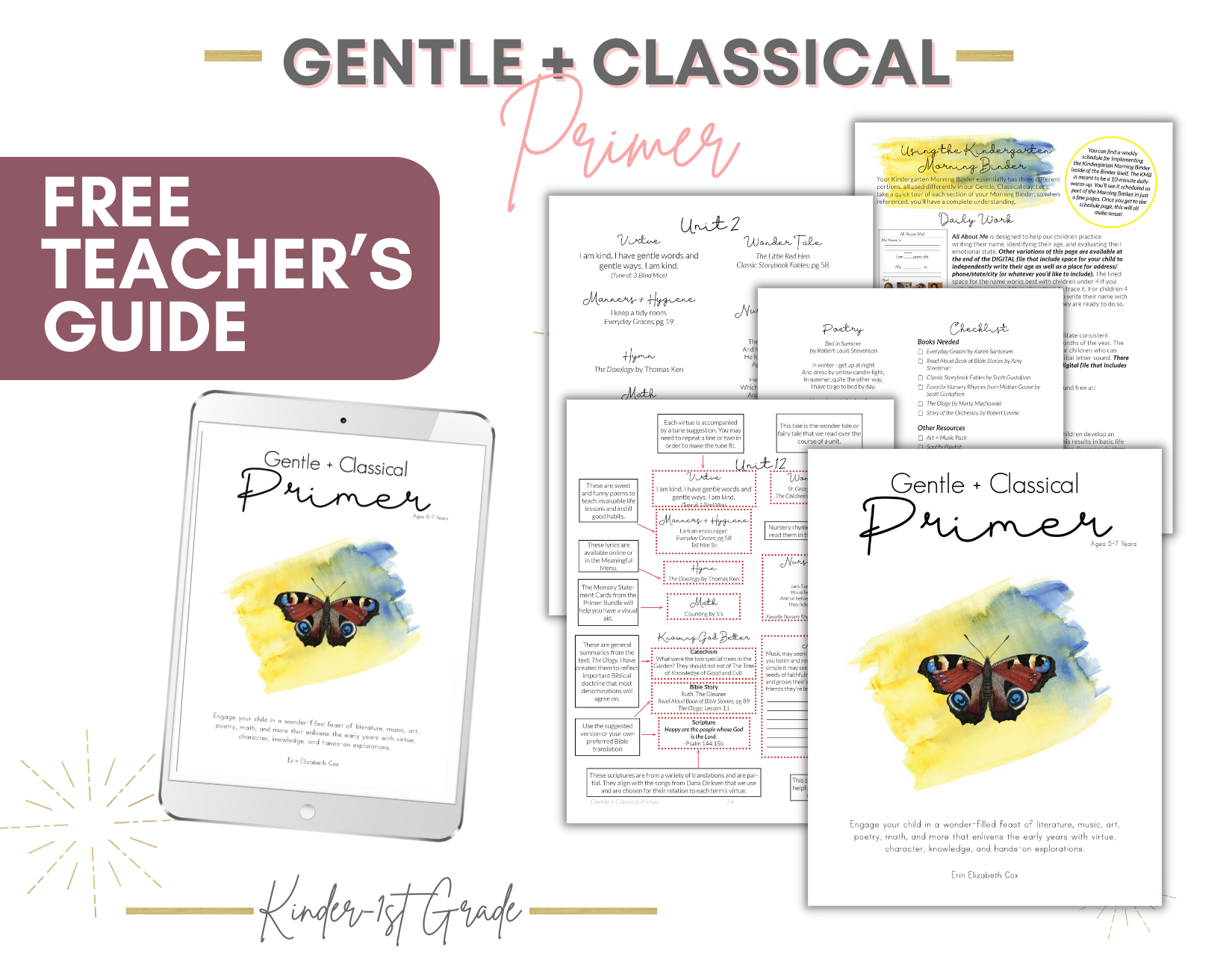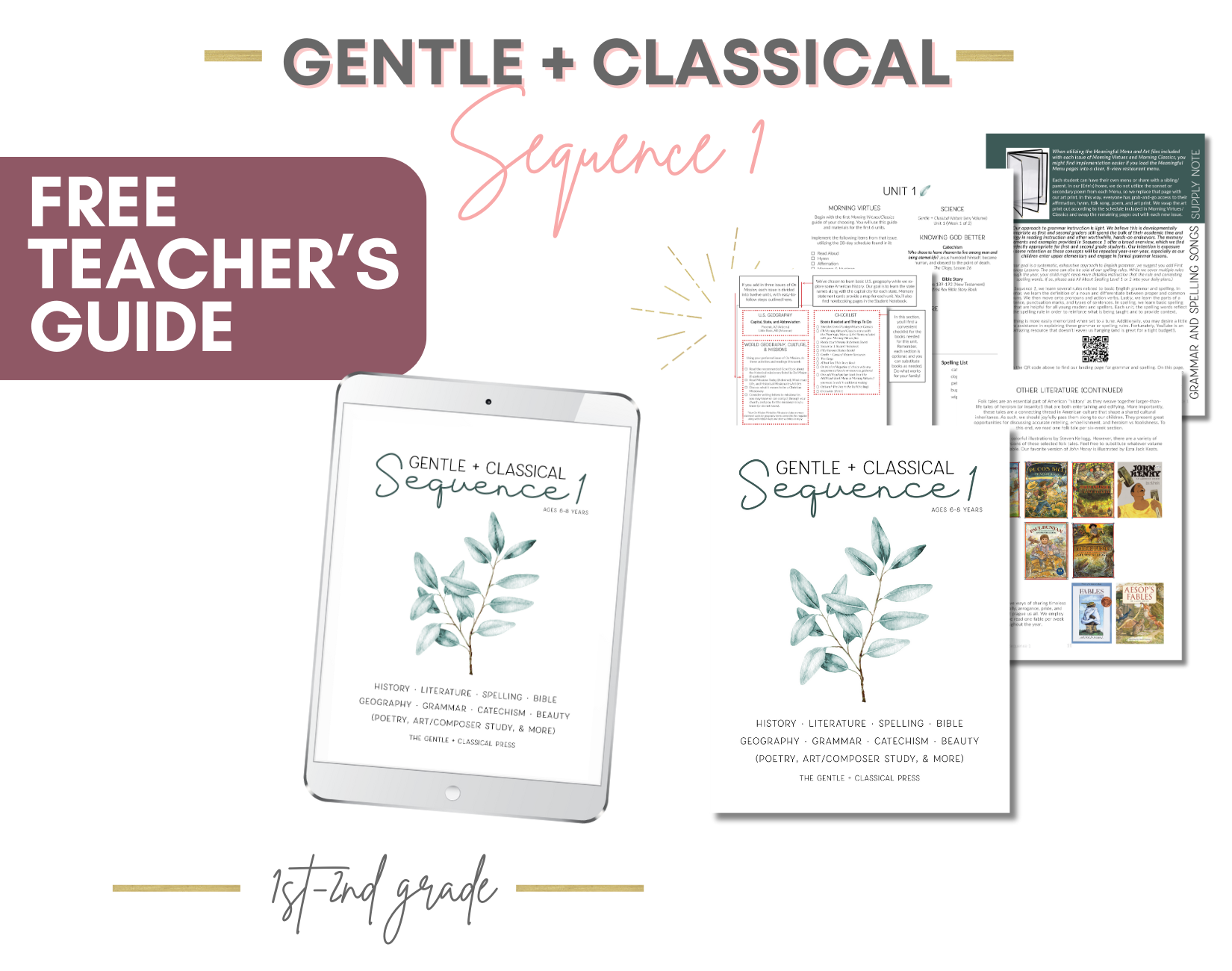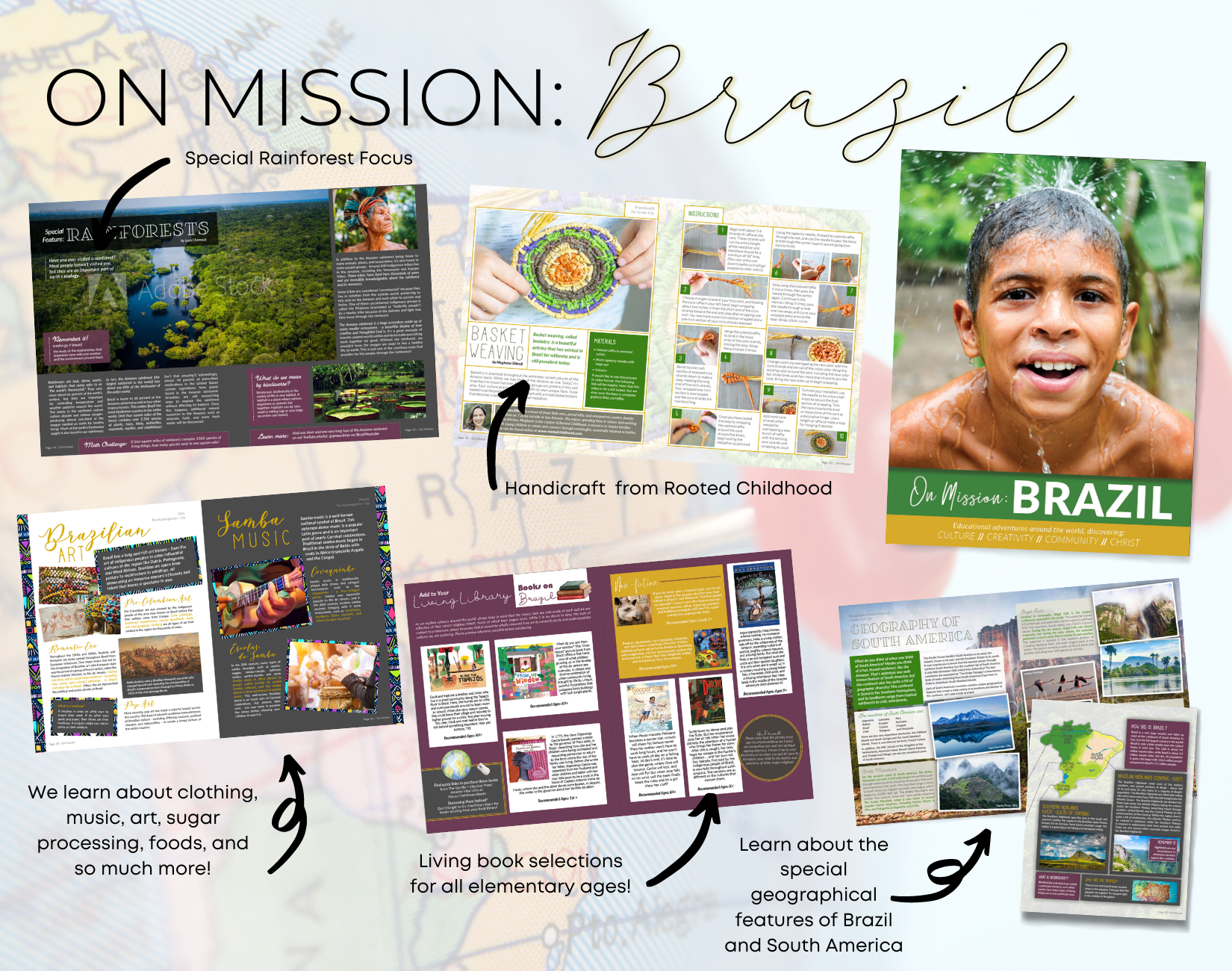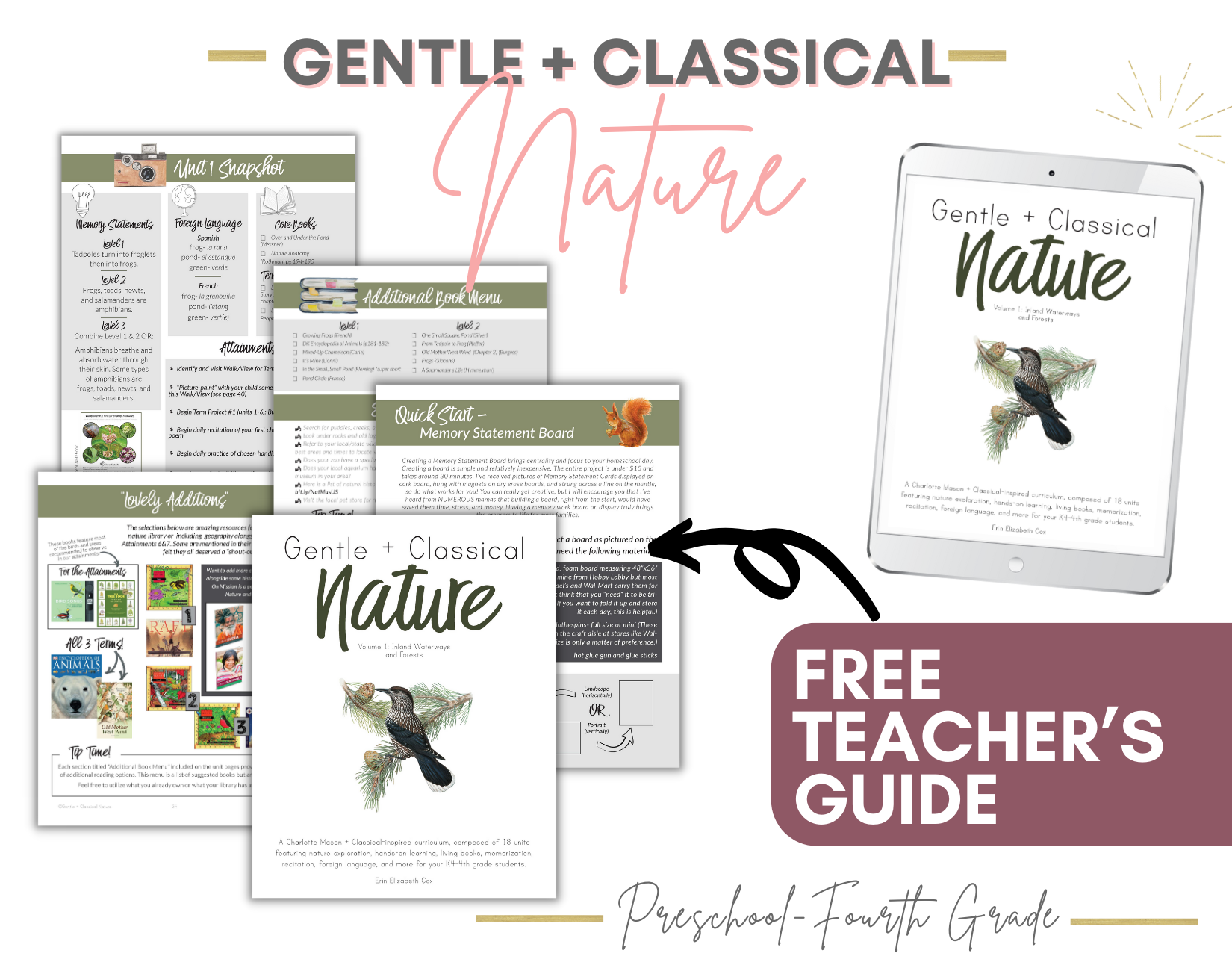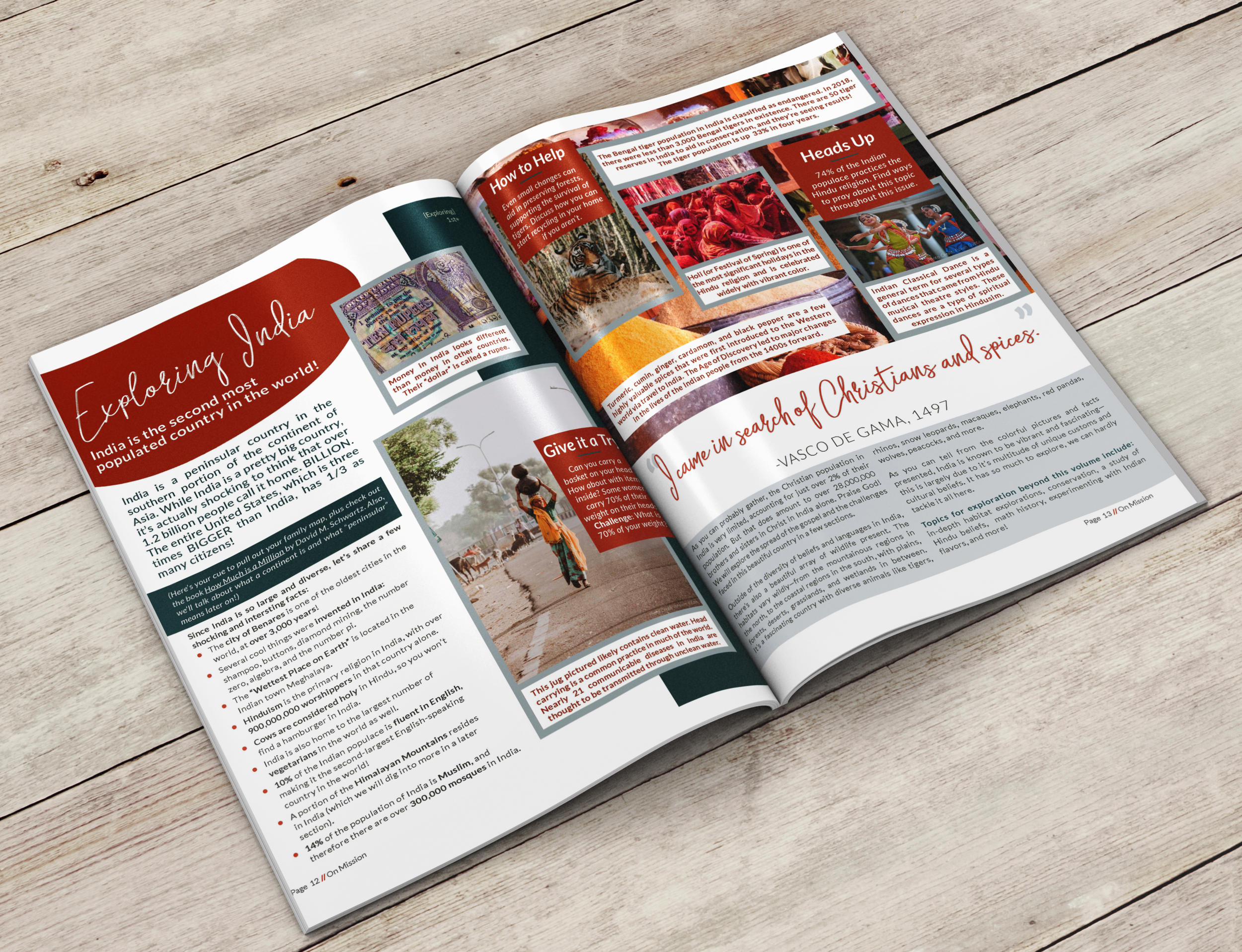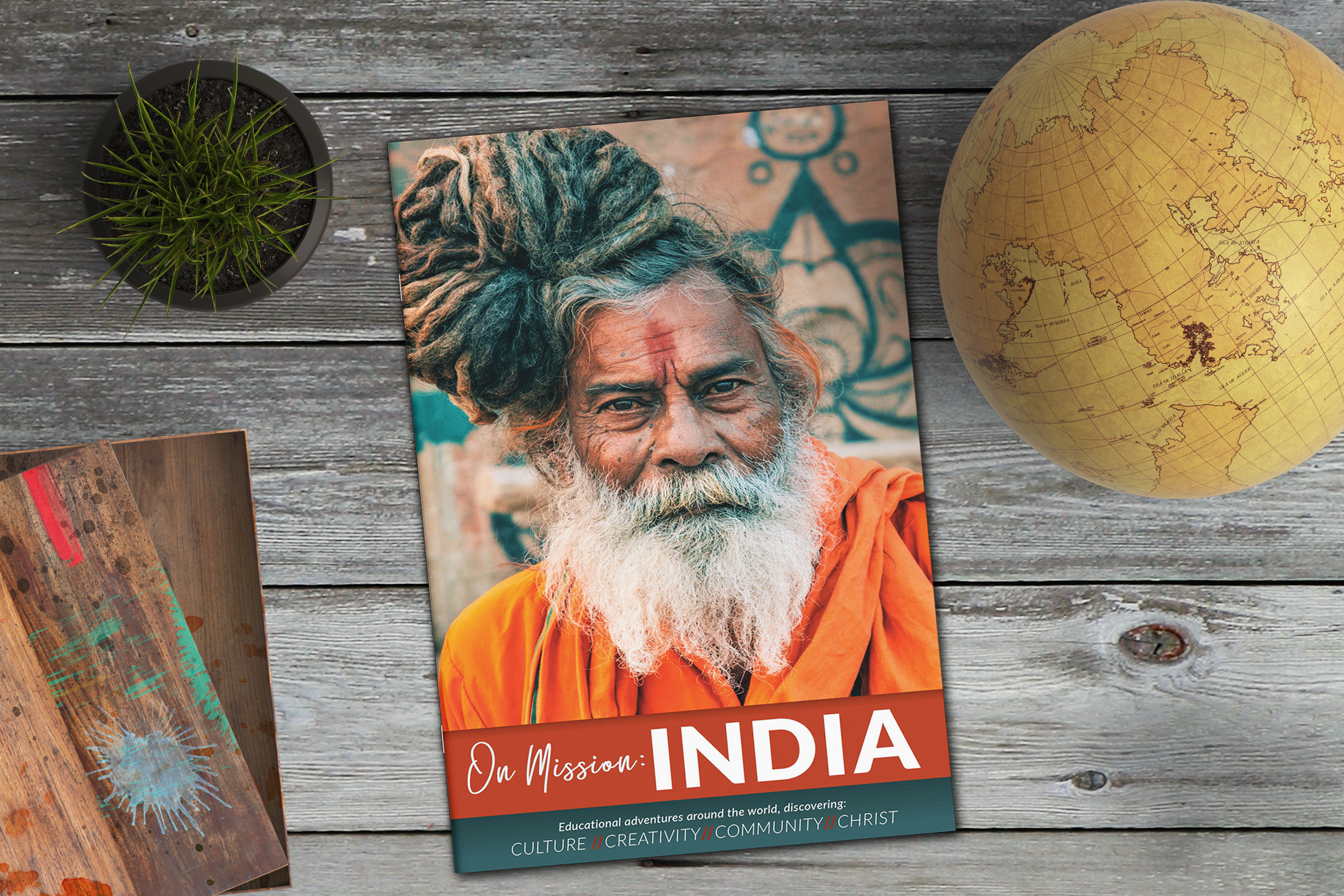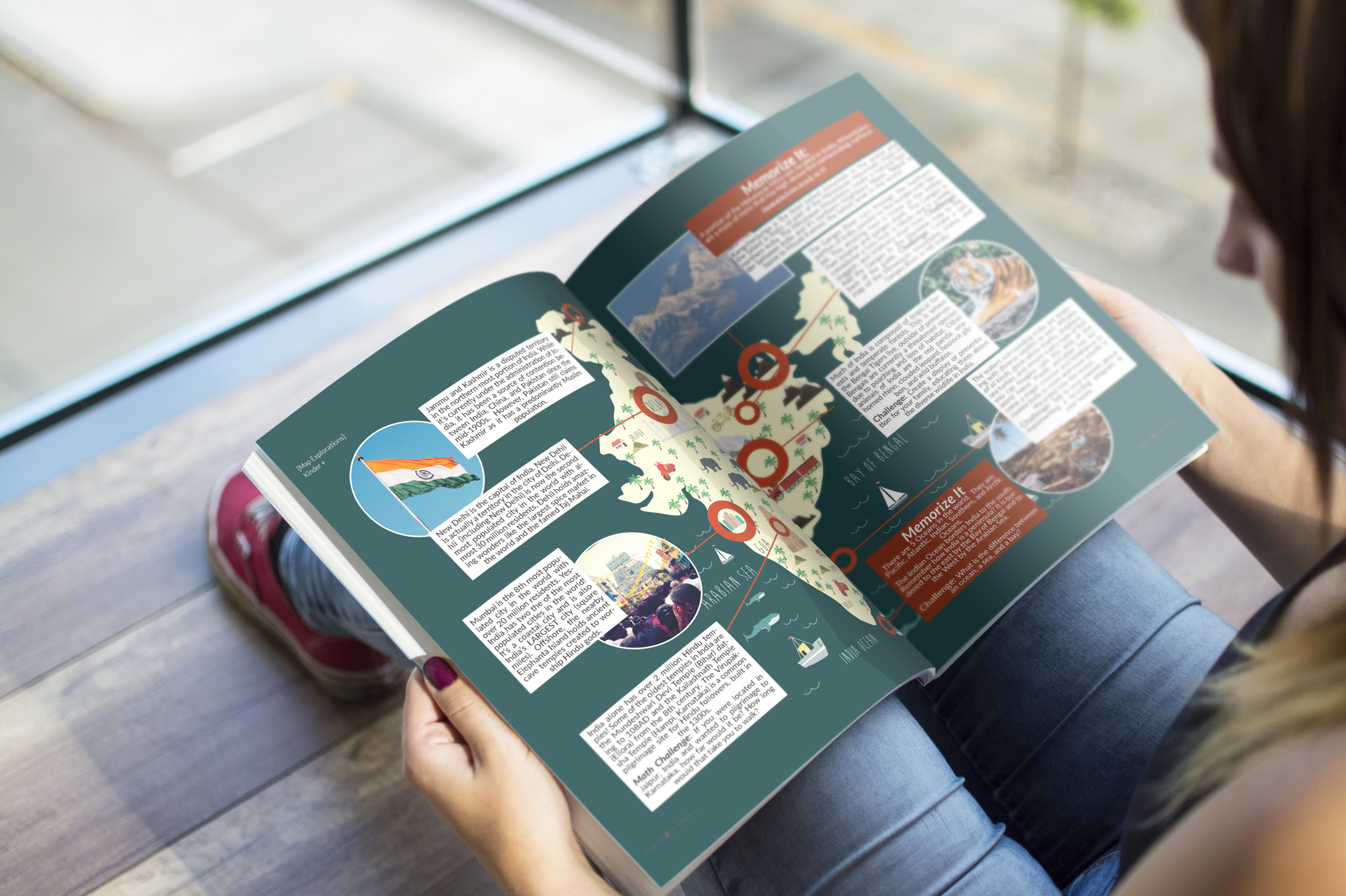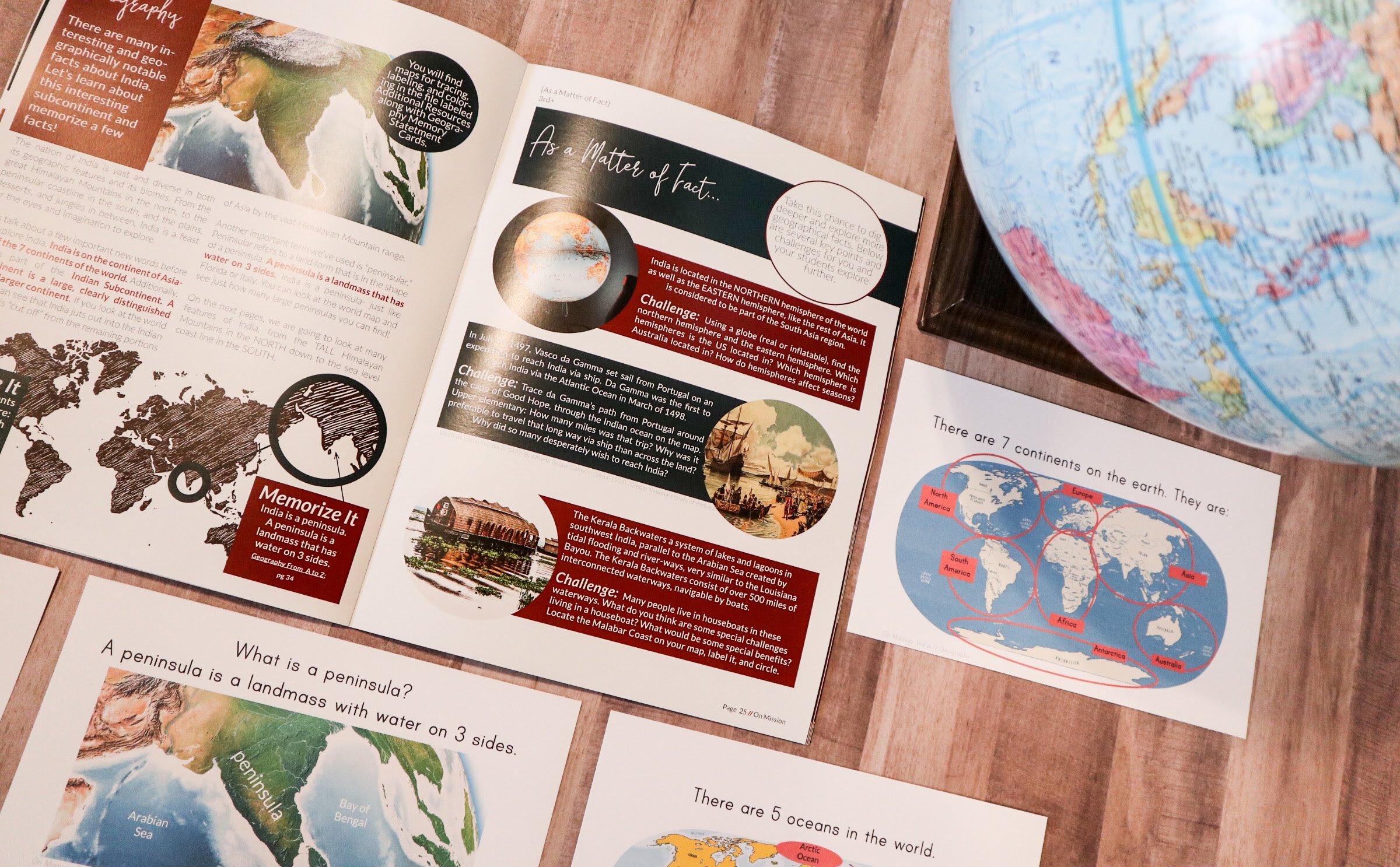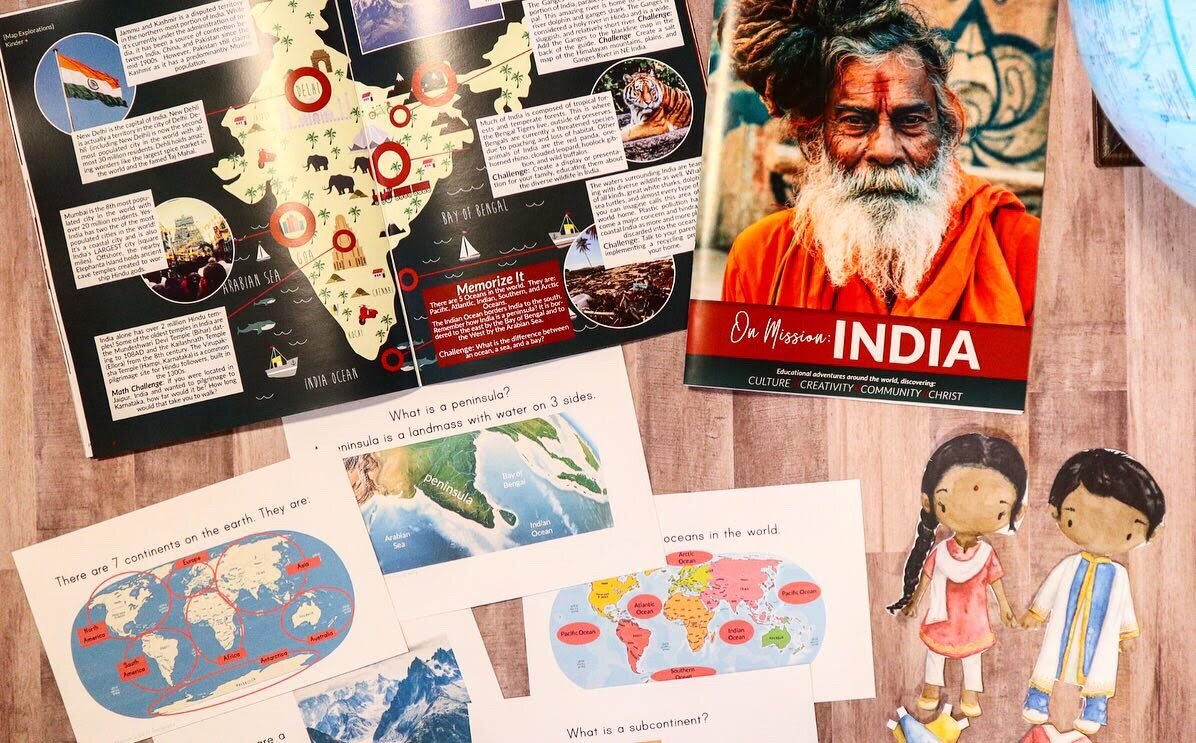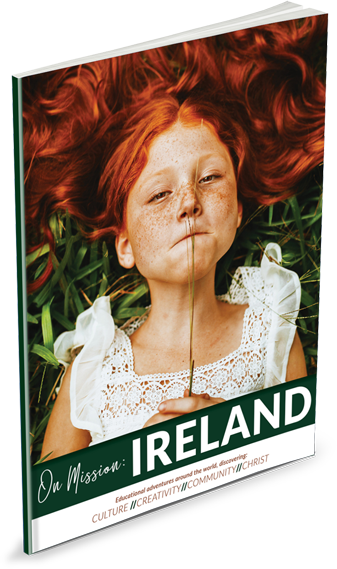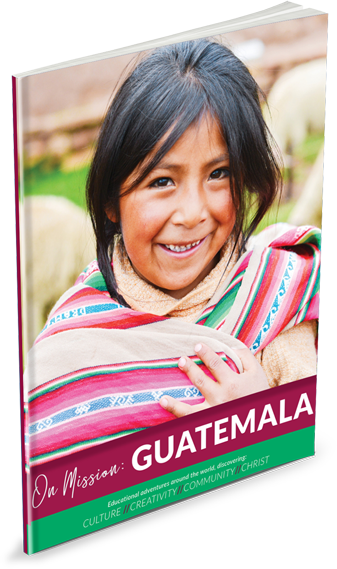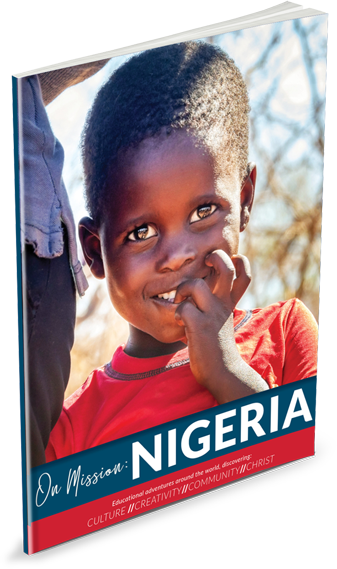How to incorporate geography, culture, and missions into your homeschool day...
/We all have basic subjects that we know are foundational for a full feast for our children: math, science, history, Bible, foreign language, and even the riches like art and music study. But, I think that it's not necessarily unique to me that we can often overlook subjects that DO deserve a presence in our homeschooling portfolio.
Traditionally, history is the "core" for a classical education- one of the four "cycles" as we have come to know them. I want to reference a post I wrote a while back in developing The Gentle + Classical Preschool Level 2:
"History has a time and place--we cannot raise good citizens of the future without their understanding where our country and world has come from. But before we ask them to read and understand the adventures of Columbus or the wars of Ancient Greece, we must first instill a right knowledge of virtue and morality, and what better way to do that than through timeless, living, whole, healing stories that draw them in and help them develop their muscles of discernment?"
I want to expand upon that notion here and say, before we can ask them to read and understand the adventures of Columbus or the wars of Ancient Greece, we must lay a foundation of understanding about the vastness of this world and the diversity of God's image-bearers that live in it.
When we study the explorations of da Gama, how much more rich and lively is that discussion when our children already understand the geography, inhabitants, and religious practices of the people of India? How much more can they imagine da Gama's first impressions, interactions, and experiences if we have gone beforehand and shared vivid images, interesting stories, and prayed for the people of that nation?
Charlotte Mason had this to say about the study of geography:
"But the peculiar value of geography lies in its fitness to nourish the mind with ideas, and to furnish the imagination with pictures. Herein lies the educational value of geography." Vol 1, p272
Geography need not be and should not be a dry digestion of facts, devoid of interaction and immersive experiences. Geography, like all educational topics, ought to be vivid, lively, hands-on, and eye-opening.
Through a proper study of God's world, we can learn more about God's people and his amazing character and creativity. We can learn about diverse wildlife and witness sights we will never see ourselves in person.
So, if we understand that God's diverse creation is worthy of study- not just it's past but its PRESENT- and all which is encapsulated in it- then how might we go about incorporating those topics into our already full and busy schedules?
"On Mission" was born from this very need and with this type of integration in mind. So, how might you integrate it into your already full school day?
“On Mission” was designed with a "one-room" schoolhouse setting in mind so that all children, into middle school, can benefit from it. This format was also created to make it easier for Mom to utilize it in an already full schedule.
Here are 5 steps for integrating “On Mission” into your school week:
1- At its core, this magazine-style curriculum was designed to be read aloud to your students. It makes an excellent (and brief) addition to morning basket. Select one article to read in full or in part during Morning Basket 1-2 days per week. The content was created to be engaging for younger students while also being informative enough for older ones. Your pace would be determined by your listeners.
2- In addition to reading from "On Mission" during Morning Basket 1-2 times per week, the Additional Resources file included with it has 4-6 Memory Statement cards to integrate into your Memory Statement Board.
3- Since "On Mission" is a quarterly (or term) publication, you have 3 months to read through all 40 pages. Therefore, you could easily plan to break the content into general "themes" and read from it once per week over 12 weeks. Themes could be:
What are Missions? + Modern Missionaries
Animals and Biomes
Basic Cultural Facts of Interest
Historical Missionaries
Foods and Recipes
Geographical Terms (one per week)
Historical Travelers
Home Life (types of homes, etc)
Agriculture or other Commodities
Language Study
School Life
Games or Entertainment
Handicrafts
Art
Music
Praying God's Word
4- Spend 1-2 hours each week digging deeply into a specific theme, utilizing the suggested core books, living books, hands-on activities and challenges. In the Additional Files folder included with "On Mission," you will find tools like blackline maps, paper dolls with traditional clothing, and scripture cards to add "teeth" to your study and equip you with tools to make implementing each part of "On Mission" a simple, stress-free addition to your school week.
5- If you utilize the Gentle + Classical Planner (free HERE), you'll see that it's easy to plug activities, recipes, and books into a weekly slot while also simply adding readings from "On Mission" and memory statements into your current morning basket time.
Once you've followed these steps and have adopted "On Mission" into your weekly routine, my prayer is that you'll find that the fruit produced in your family through explorations, reading, and prayer by far outweigh the time you've invested in preparing and planning!

